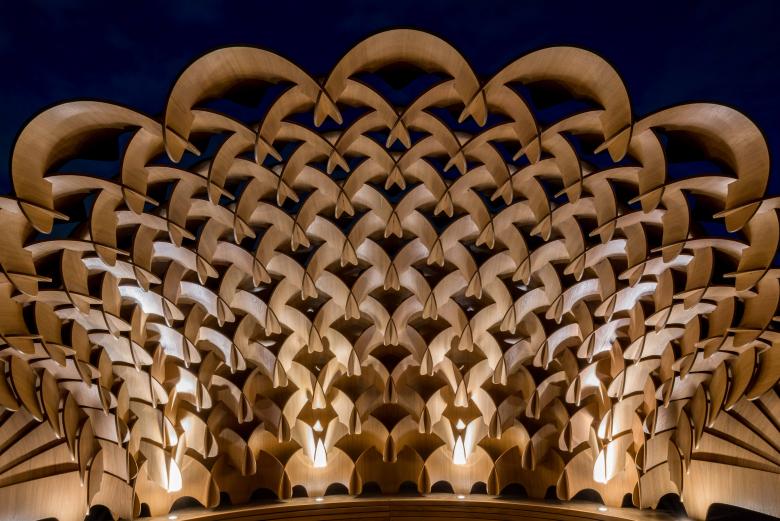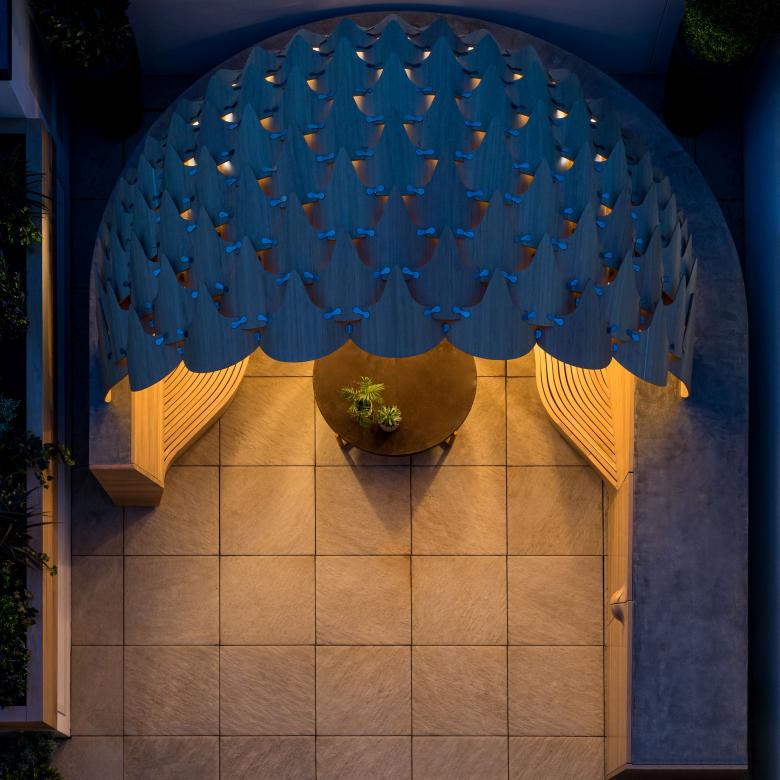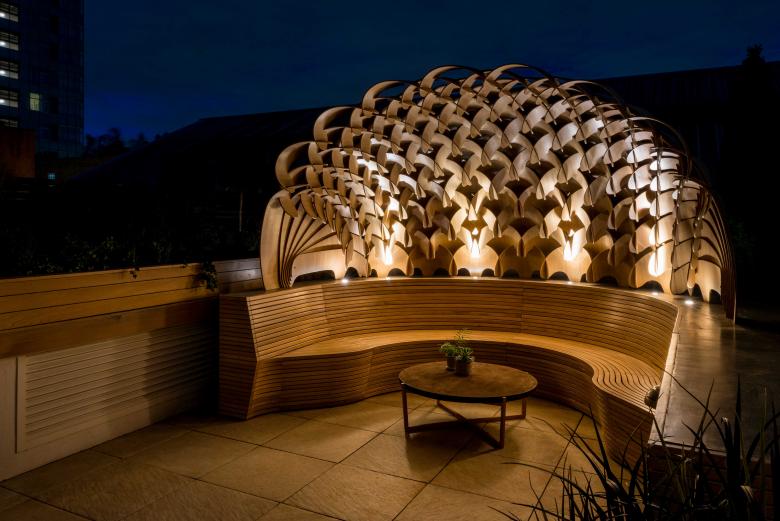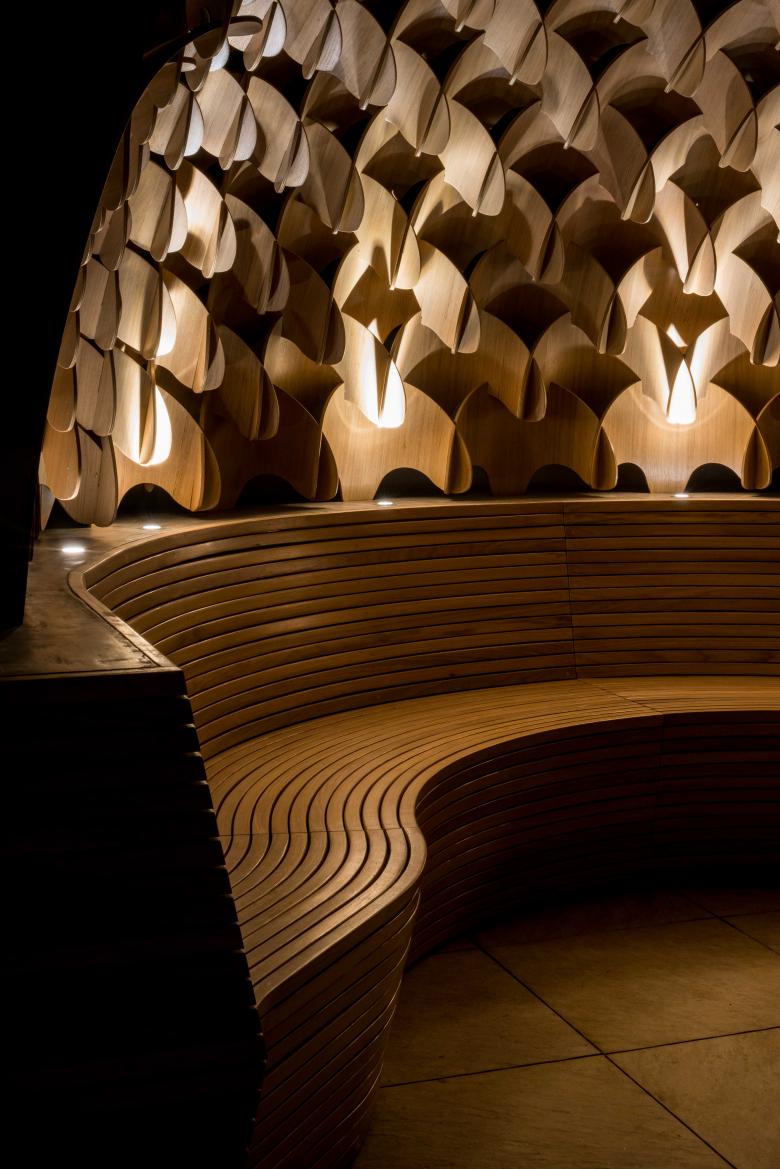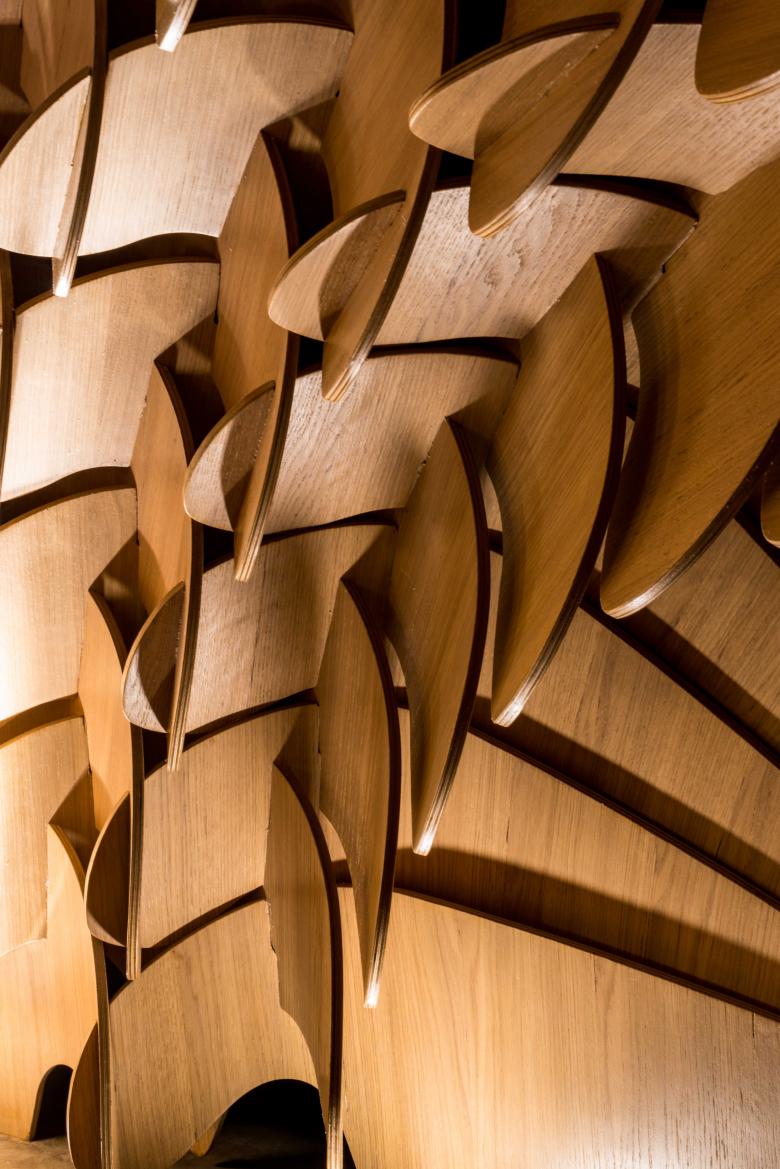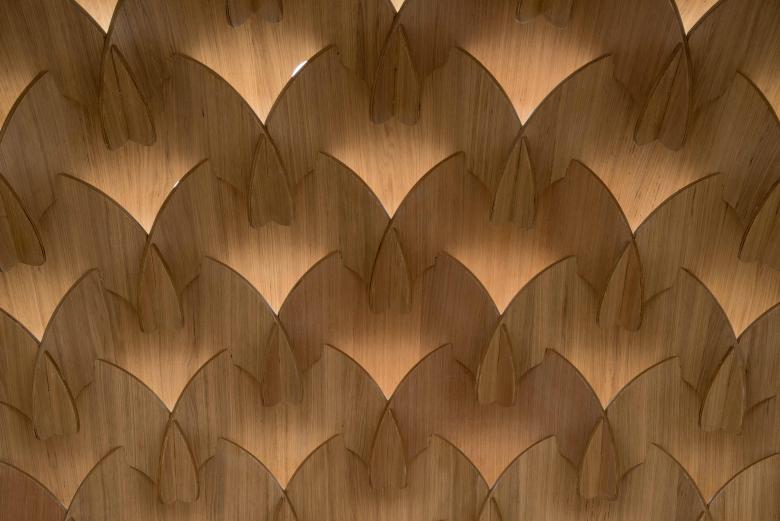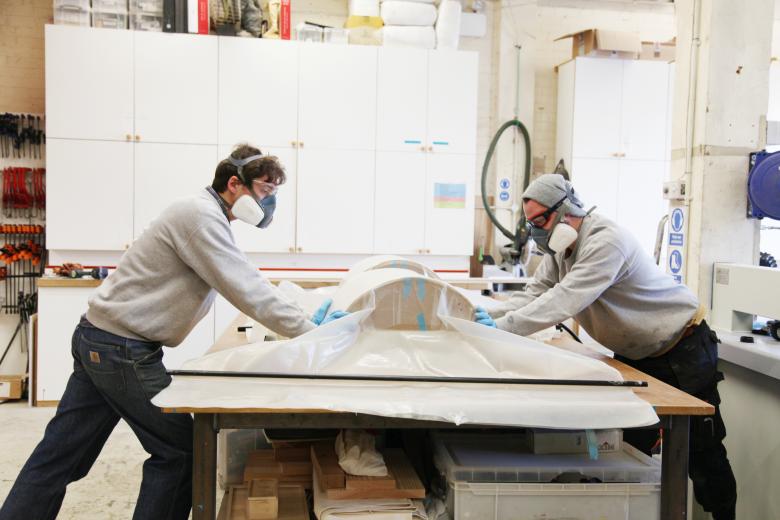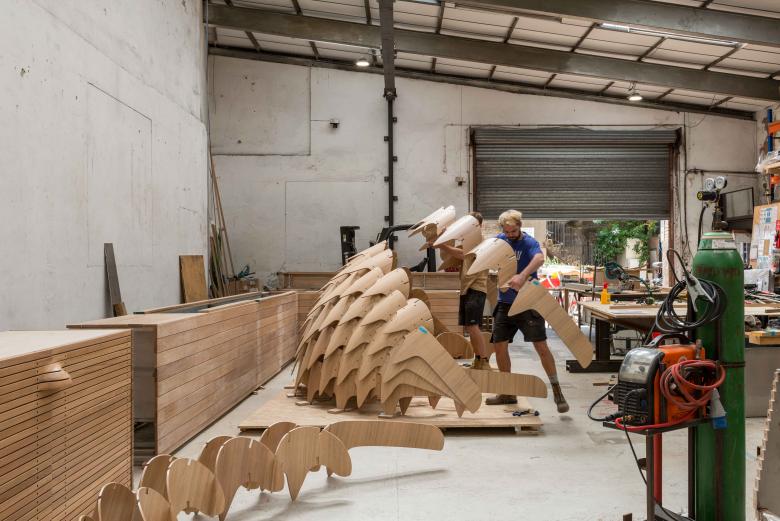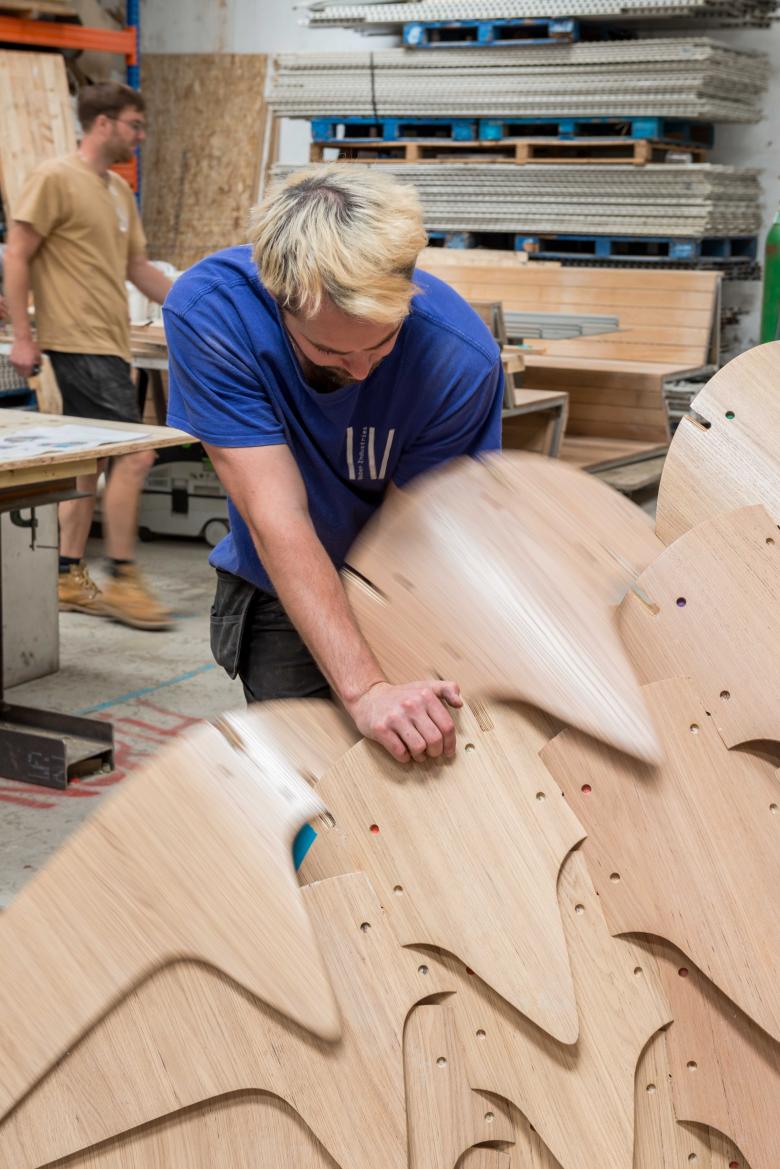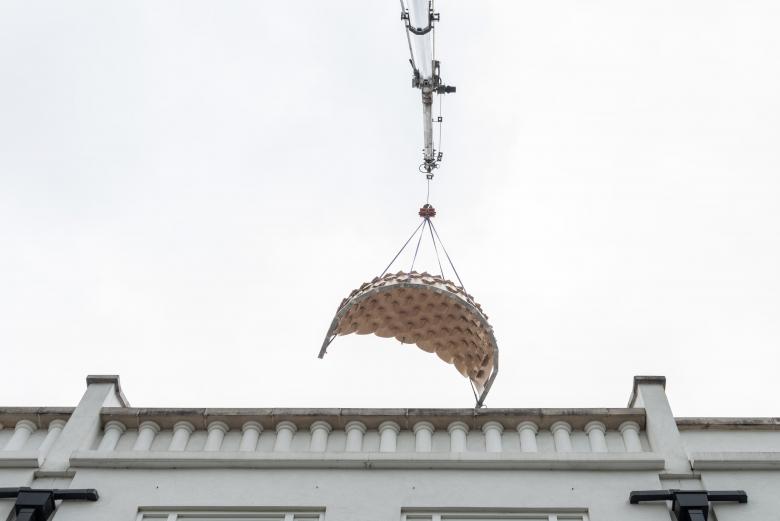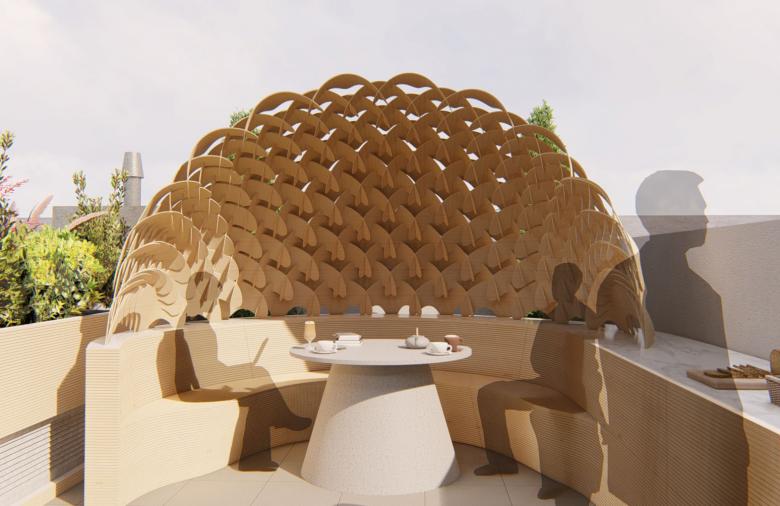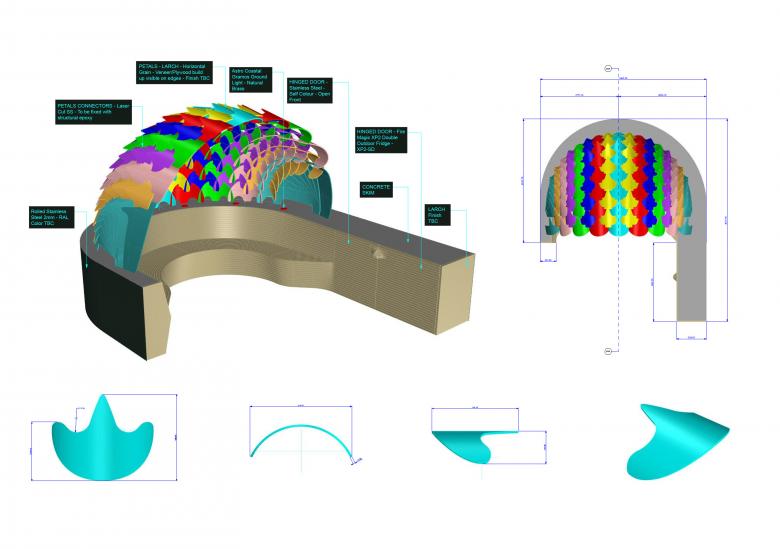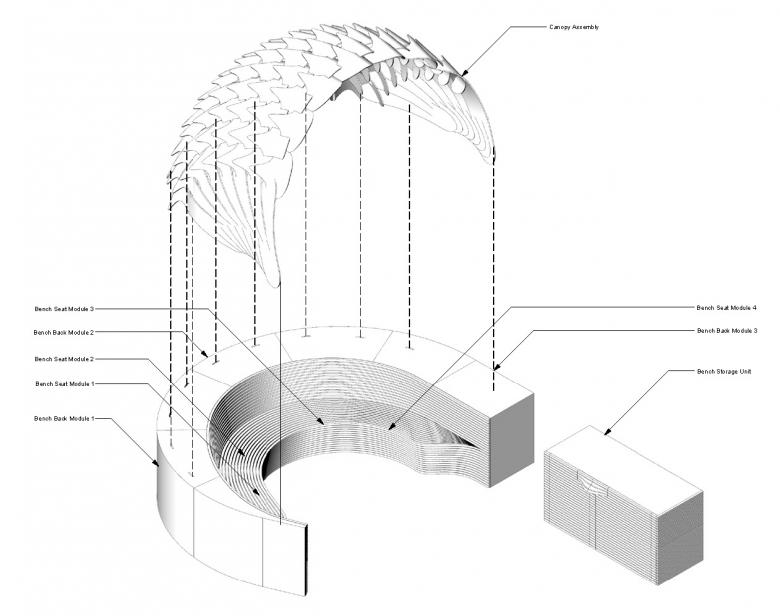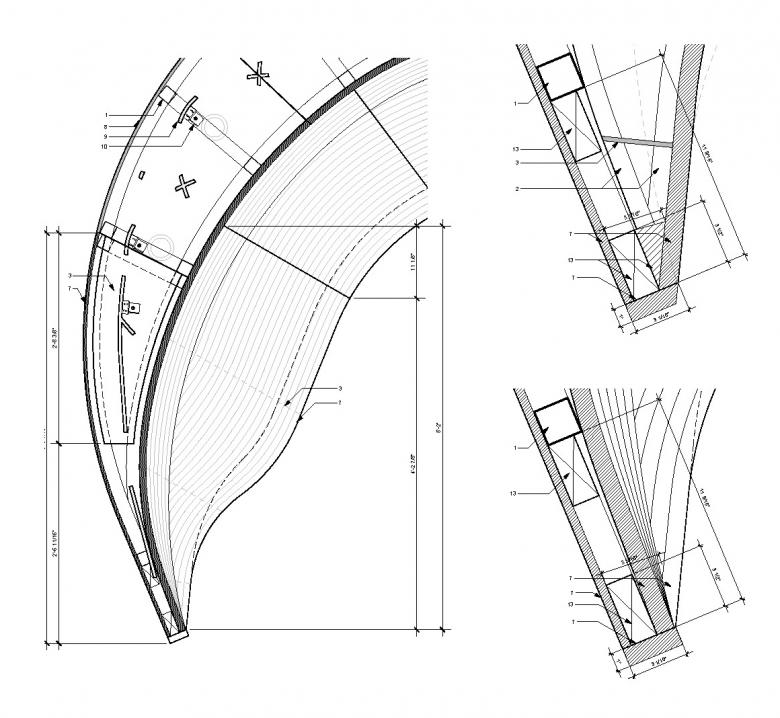A Canopy of Timber Tiles
John Hill
21. January 2021
Photo: French+Tye
The coronavirus pandemic may have kept New Yorkers from traveling to London last year, but it didn't stop the transatlantic collaboration that resulted in a timber pavilion recently built on a residential rooftop. Made from dozens of interlocking curved timber tiles, the canopy designed by New York's Schiller Projects is a striking architectural statement tucked away on a small London terrace.
Location: London, England
Architect: Schiller Projects, New York
Design Partner: Novak Hiles Architects, London
Main Fabricator: Weber Industries, London
Landscaping: Fake Landscapes, London
Photo: French+Tye
We first learned about the London Timber Pavilion in 2019, on a studio visit to Schiller Projects at 55 Hudson Yards in Manhattan. Comparing a rendering from that time (visible via the link and at bottom) with photos of the project, completed in fall 2020, it appears the final product is true to the original design — remarkable, given the novelty and complexity of the curved-timber structure. The wood canopy is located on one of two roof terraces at the residence of a married couple who wanted to enjoy their time outside while in London. They hired Aaron Schiller's firm to design the two terraces because they thought he might give them "many more ideas" than their budget would allow. While the upper terrace is dedicated to dining and features a fairly simple concrete table surrounded by raised planters for privacy, the seating area on the lower terrace is where the big ideas converge: a curved bench is capped by a quarter-sphere canopy made from locally sourced wood "petals" whose curved forms are like miniature versions of the canopy itself.
Photo: French+Tye
The canopy was designed to give year-round usability to one end of the lower terrace, shielding the couple and their guests from wind, rain, and sun. Given its size and the logic of limiting the weight of any addition to an existing rooftop, the natural choice for the structure was wood rather than steel or concrete. More than that, "the project was ultimately a study in self-supporting timber structures," in Schiller's words, "in which we focused on the elimination of materials that hold more embodied carbon." Stainless steel tubes are used to frame the bench that is covered in matching timber, but the canopy itself is almost entirely wood; just glue and some metal fasteners are used to give additional lateral stability to the structure.
Photo: French+Tye
Each petal was made from a standard timber sheet: pile wood cores covered in 1.4mm structural oak veneers. The petals were milled individually, following a computer model, then steam-bent into place over a single curved mold that was reused to eliminate waste. With slots cut into them, the curved petals were basically fitted into rows and then assembled from near-vertical at the base to near-horizontal at the top, following the form of a sphere. This form lends the structure a good deal of stability yet it also helps in shedding water — certainly an important consideration in a city known more for rain than sunshine.
Photo: French+Tye
Fabrication and installation of the canopy and other parts of the project took place during the coronavirus lockdowns, though Schiller said that did not impact the delivery of the project. The team members in New York and London collaborated digitally, as so many other people have done for the last ten months. Ironically, the pre-Covid design of the canopy presages the outdoor dining shelters that appeared on both sides of the Atlantic in 2020. The canopy sheds water yet allows air movement; the modular, prefab pieces speed up construction; and the single natural material engenders relaxation, something much in demand. In this sense, the timber pavilion might just serve as a precedent for future dining shelters — though hopefully, in 2021, their days are numbered.
